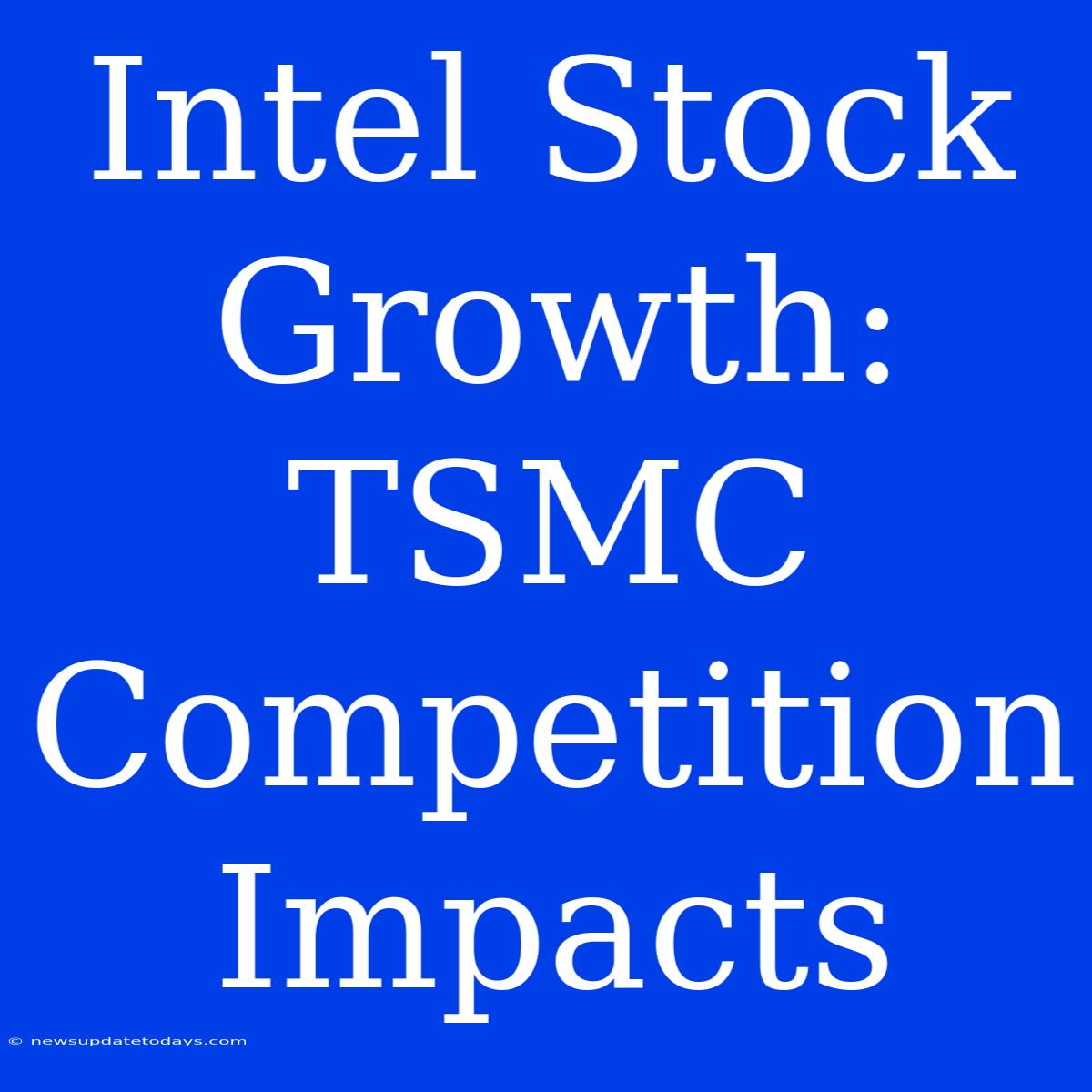Intel Stock Growth: Navigating the TSMC Competitive Landscape
Intel, a titan in the semiconductor industry, faces a formidable challenge: the relentless rise of Taiwan Semiconductor Manufacturing Company (TSMC). This article delves into the impact of TSMC's competition on Intel's stock growth, exploring the challenges and opportunities that lie ahead for the chip giant.
The TSMC Advantage: Manufacturing Prowess
TSMC's dominance stems from its advanced manufacturing capabilities. They consistently lead in producing smaller, more powerful chips, a crucial factor in today's technology landscape. This allows their clients, including Apple, Qualcomm, and AMD, access to cutting-edge technology that Intel has, until recently, struggled to match. This manufacturing lead directly impacts Intel's market share and profitability.
Intel's Counter-Strategies: IDM 2.0 and Beyond
Facing this challenge, Intel has initiated its "IDM 2.0" strategy. This involves a significant investment in its manufacturing capabilities, aiming to regain its edge in advanced node production. They are also exploring partnerships and potentially outsourcing some manufacturing to external foundries. The success of IDM 2.0 is crucial to Intel's stock performance. The effectiveness of this strategy will determine Intel's ability to compete with TSMC and regain lost ground.
Market Share Battles: A Close Look at the Competition
The competition between Intel and TSMC isn't just about manufacturing; it's a battle for market share across various sectors. Intel traditionally holds a strong position in the PC processor market, but TSMC-manufactured chips are increasingly found in high-performance computing, mobile devices, and other growing segments. Analyzing the shifting market share dynamics is key to understanding Intel's future stock growth potential.
Financial Performance and Investor Sentiment
Intel's stock price is directly influenced by its financial performance, and investor sentiment plays a pivotal role. Any slowdown in growth or missed targets directly impacts investor confidence, leading to stock price fluctuations. Understanding the correlation between Intel's financial reports, its progress in IDM 2.0, and the overall competitive landscape is crucial for informed investment decisions.
Long-Term Outlook: Opportunities and Risks
While TSMC poses a significant challenge, Intel still possesses substantial strengths. Its extensive intellectual property, established customer relationships, and brand recognition offer valuable assets. The long-term outlook for Intel's stock hinges on its ability to successfully execute IDM 2.0, navigate the evolving semiconductor landscape, and capitalize on emerging opportunities in areas like AI and autonomous driving. Investors should carefully assess both the risks and opportunities associated with Intel's ongoing transformation.
Conclusion: A Cautious Optimism
The competitive pressure from TSMC presents a significant hurdle for Intel's stock growth. However, Intel's strategic initiatives, substantial resources, and brand recognition provide grounds for cautious optimism. The coming years will be pivotal, as Intel's success in executing its IDM 2.0 strategy and competing effectively will largely determine its future market position and stock performance. Continuous monitoring of Intel's progress, financial reports, and market share dynamics is essential for investors seeking to understand the full implications of the TSMC competition.

